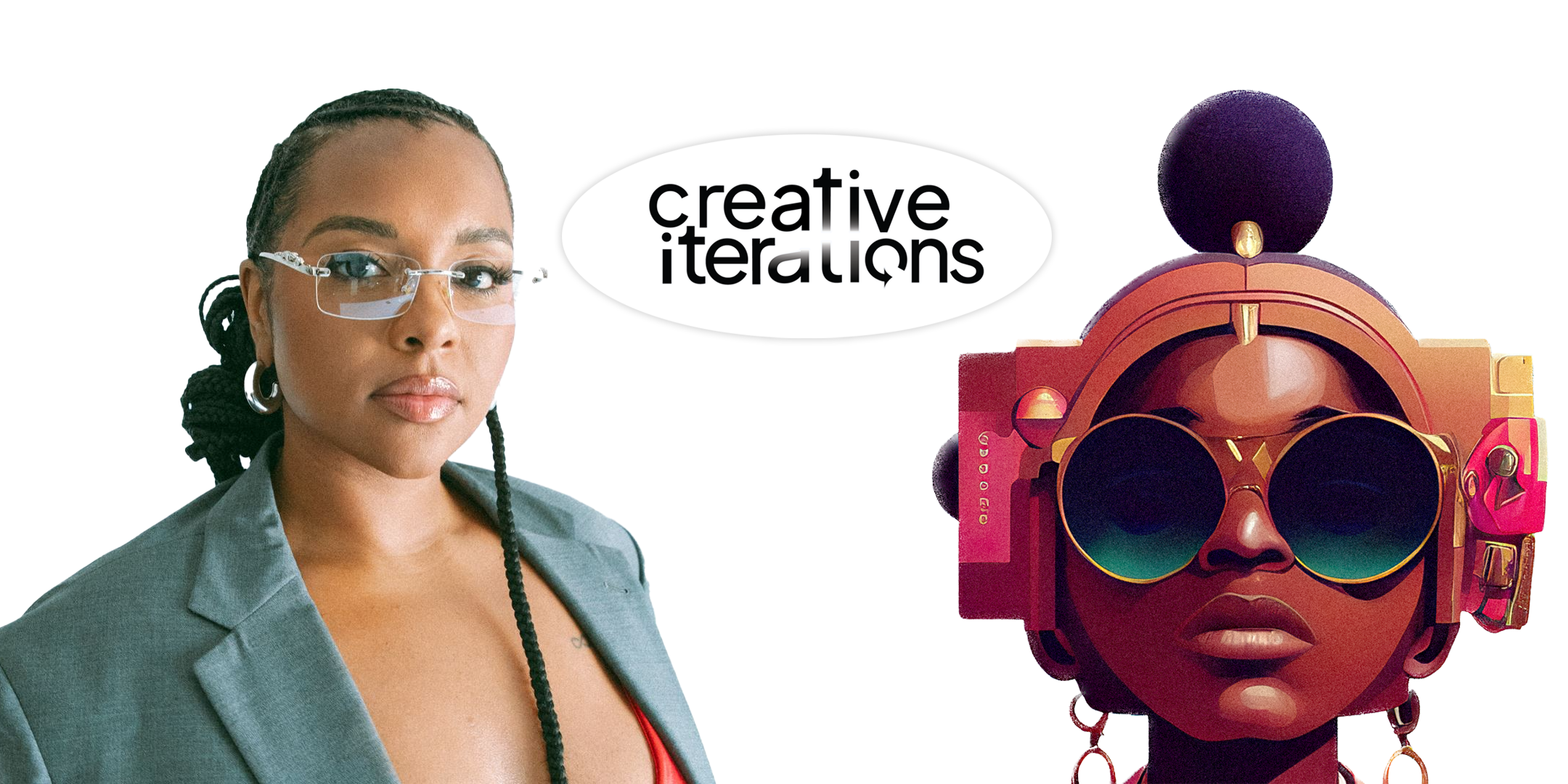
In the second episode of Creative Iterations, Take Creative Control’s Kim Tignor and Hollis Wong-Wear sit down with artist and technologist Latasha and collector-curator Sian Morson to unpack one of the most charged questions in today’s cultural economy: Can Web3 technology actually deliver power back to creators?
What is Web3 Anyway?
Web3 refers to a decentralized version of the internet built on blockchain technology. The implications for creatives is pretty incredible. Instead of relying on centralized intermediaries—record labels, galleries, or social-media platforms—it allows individuals to verify and exchange ownership directly through digital wallets, smart contracts, and non-fungible tokens (NFTs).
Web3’s core promise is summarized in three words: Read. Write. Own.
- Read: Access content freely.
- Write: Create and publish.
- Own: Retain control over identity, assets, and data.
For artists, this shift could mean the difference between leasing visibility and owning equity. Verified blockchain allows creators to track sales, automate royalties, and engage directly with supporters without intermediaries taking a disproportionate share.
Early Momentum and Lessons Learned
When the first wave of Web3 enthusiasm hit in 2021, many artists found new financial freedom. Latasha, an early adopter, described earning the equivalent of a record deal in months—without surrendering her masters or creative control. Collectors like Morson championed a new culture of intentional patronage: “Buy what you love. That’s where the value is.”
But the downturn that followed revealed how fragile this ecosystem still is. As crypto markets fell, some platforms quietly disabled artist royalties, showing that decentralization on paper doesn’t always mean shared power in practice. The lesson: without creator governance, even “disruptive” tech can replicate old hierarchies.
Identity as Infrastructure
Web3 identity systems—verified through decentralized networks rather than corporate databases—carry special meaning for historically excluded creators. They allow artists to protect and prove authorship across platforms, maintain reputational capital independent of algorithms, and build communities that are portable rather than platform-bound.
For artists of color, this represents not just inclusion but self-determination. As Latasha said, “We can’t afford to be left behind again.”
The Path Forward: Building a Creator-Led Web3
The next phase of Web3 must be creator-built—not only used by artists, but designed and governed by them. The early promise of decentralization faltered when platforms and investors re-centralized control, proving that ownership on paper means little without ownership in code, governance, and infrastructure.
A creator-built Web3 requires intentional design around four principles:
- Ownership and Interoperability: Artists must control their data, creative assets, and audience relationships across platforms. Blockchain and decentralized storage make this possible, eliminating dependence on a single intermediary.
- Transparent Compensation: Smart contracts should embed fair royalty and resale terms that are visible, automatic, and tamper-proof. Artists deserve predictable revenue, not algorithmic luck.
- Community Governance: Through decentralized autonomous organizations (DAOs) and cooperative protocols, creators and their audiences can co-own the systems they rely on, setting policy collectively rather than deferring to opaque corporate hierarchies.
- Open Infrastructure: Open-source, accessible codebases let independent creators and developers build new tools without gatekeeping. This is how culture scales—through shared innovation, not proprietary control.
Platforms like Zora, Lens Protocol, and Sound.xyz already demonstrate early models of this shift. Latasha’s forthcoming platform, In Process, extends it further—helping creators monetize and archive their behind-the-scenes work while keeping agency over their intellectual property. These examples point toward an ecosystem where creators are not platform tenants but infrastructure architects.
At Take Creative Control, we see this moment as a design challenge, not a market trend. Web3’s true test is whether it can evolve from speculative hype into a functional, equitable infrastructure that respects the people who make culture. That means investment in creator literacy—understanding contracts, governance models, and data rights—as much as in technology itself.
When creators shape the systems that distribute and define cultural value, decentralization becomes more than a technical experiment—it becomes a civic act. The future of creativity depends on infrastructure that is transparent, interoperable, and rooted in dignity.
Listen and Learn
Creative Iterations is our space to hold these conversations in public—and to push forward a vision that centers ownership, transparency, and dignity.
Listen to the full episode featuring Latasha and Sian Morson, and follow them at @callmelatasha and @sianmorson.
Listen to the full podcast here.


